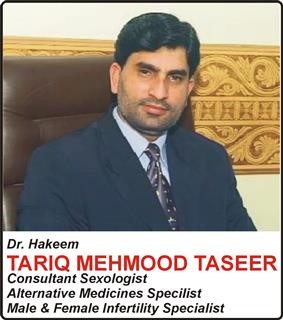The Infertility Org
History of Infertility Icd 10 Code
We have your source for total information and resources for History of Infertility Icd 10 Code on the Internet.
21,22 Evaluation of Women Jump to section + The etiology of female infertility can be broken down into ovulation disorders, uterine abnormalities, tubal obstruction, and peritoneal factors. Endometriosis can only be confirmed by surgery, usually laparoscopy. A specific portion of the androgen receptor gene, exon 1, has been studied in infertile males and a meta-analysis that involved males with idiopathic infertility and fertile controls found that infertility was directly correlated with the length of CAG repeats in this exon.[23] Y chromosome microdeletion syndrome The long arm of the Y chromosome (Yq) is considered critical for fertility, especially Yq11. These tests are used to determine gland failure or obstruction. Large polyps or multiple polyps can impact fertility by interfering with the ability of embryo to implant and should be removed. This diagnosis is therefore shared by 15% of couples attempting to conceive.
According to the literature survey, the most common causes of infertility are: male factor [5,7-9,13-15] such as sperm abnormalities [9,13,15], female factor [7-9,14-16] such as ovulation dysfunction [7,8] and tubal pathology [7-9], combined male and female factors [7,9,14,15] and unexplained infertility; where no obvious cause could be detected [7-9]. PPT Presentation Summary : Embryo cryopreservation (via ovulation induction) Oocyte cryopreservation. With this treatment, the patient experience spermatogenesis, and therefore, it has the chance to have offspring if he wants to. Minimal Ovarian Stimulation (mini-IVF) for IVF Utilizing Vitrification and Cryopreserved Embryo Transfer. (PDF, 406 KB) Reproductive BioMedicine Online, 2010. Problems with sexual intercourse These can include trouble keeping or maintaining an erection sufficient for sex (erectile dysfunction), premature ejaculation, painful intercourse, anatomical abnormalities such as having a urethral opening beneath the penis (hypospadias), or psychological or relationship problems that interfere with sex.
Below are Some Even more Details on Infertility Clinic Oklahoma City

Right here are Some More Resources on History of Infertility Icd 10 Code
Factors Affecting Fertility: Timing of Intercourse Intercourse prior to ovulation is key to maximizing the chance of pregnancy. There is still some controversy about their existence, but if the discoveries are true, this could mean a new treatment for infertility.[71] Stem cell therapy is really new, and everything is still under investigation. A special type of laparoscope called a fertiloscope, which is modified for transvaginal application, can be used. High Fertilization and Pregnancy Rate after Intracytoplasmic Sperm Injection with Spermatozoa Obtained from Testicle Biopsy. (PDF, 3 MB) Human Reproduction, 1995. Veltman-Verhulst SM, Cohlen BJ, Hughes E, Heineman MJ. Medicines and drugs Certain types of medicines can sometimes cause infertility problems.
Here are Some Even more Information on Infertility Clinic Oklahoma City
4) In Vitro Fertilization (IVF): In vitro means “outside the body.” IVF is a process whereby eggs are collected and then fertilized by sperm outside the body, in an embryology laboratory. However, hormones are not the main problem in 97% of infertile men. Immotility of the sperm can be caused by antibodies against the sperm. An ultrasound scan can detect an ectopic pregnancy. These abnormalities can also cause irregular bleeding between menstrual cycles.
Right here are Some More Info on Infertility-Related Endometriosis
Defects in cilia Immotile cilia syndrome may occur as an isolated disorder or as part of Kartagener syndrome with situs inversus. Infertility tests for women A woman will undergo a general physical examination, and the doctor will ask about her medical history, medications, menstruation cycle, and sexual habits. Couples may decide to go ahead regardless if the desire to become pregnant is very strong. Such tissue growth and its surgical removal can cause scarring and prevent fertilization. Uterine and cervical causes Problems in the uterus or cervix may also affect fertility. Many health conditions can make it hard to get pregnant. This is obviously extremely distressing for the couples involved. Growth of Baby Kidneys Transplanted into Adults. (PDF, 1 MB) Archives of Surgery, 1976. Many more couples, however, experience involuntary childlessness for at least one year: estimates range from 12% to 28%.[4] Male infertility is responsible for 20–30% of infertility cases, while 20–35% are due to female infertility, and 25–40% are due to combined problems in both parts.[2][5] In 10–20% of cases, no cause is found.[5] The most common cause of female infertility is ovulatory problems, which generally manifest themselves by sparse or absent menstrual periods.[6] Male infertility is most commonly due to deficiencies in the semen, and semen quality is used as a surrogate measure of male fecundity.[7] Women who are fertile experience a natural period of fertility before and during ovulation, and they are naturally infertile for the rest of the menstrual cycle. In patients with obstructive azoospermia and normal gonadotropin levels, sperm can be obtained through microsurgical epididymal sperm aspiration or testicular biopsy. [213] Fertilization of the oocytes is performed using IVF/intracytoplasmic sperm injection.
Previous Next
See also
Female Infertility Hormone Imbalance
Evaluation of Infertility
Infertility Awareness Week Google